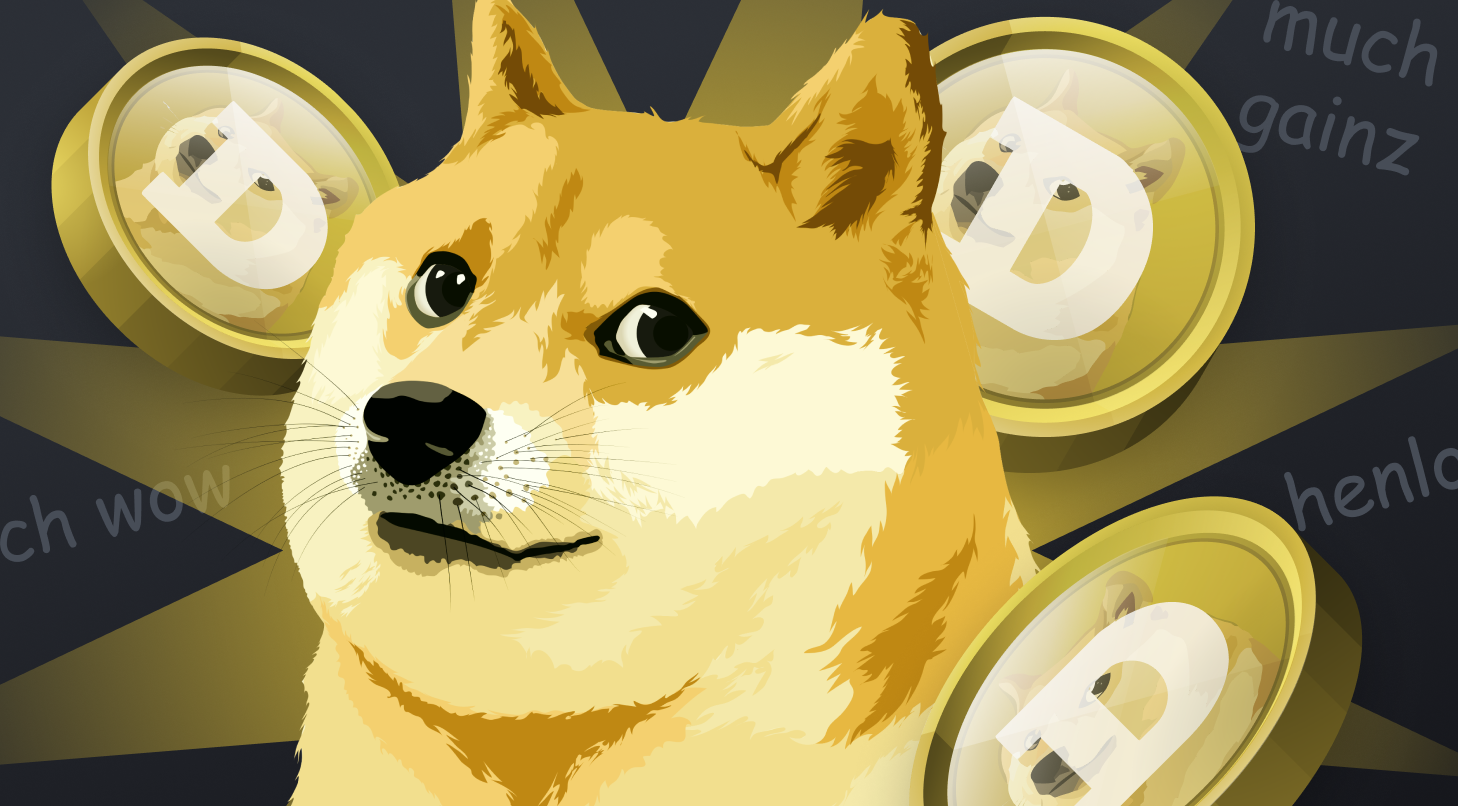-
 Bitcoin
Bitcoin $84,380.9629
-0.68% -
 Ethereum
Ethereum $1,587.8040
0.39% -
 Tether USDt
Tether USDt $0.9997
0.02% -
 XRP
XRP $2.0611
-0.10% -
 BNB
BNB $592.1695
0.41% -
 Solana
Solana $134.0171
-0.42% -
 USDC
USDC $1.0000
0.00% -
 Dogecoin
Dogecoin $0.1576
1.44% -
 TRON
TRON $0.2401
-3.06% -
 Cardano
Cardano $0.6295
2.16% -
 UNUS SED LEO
UNUS SED LEO $9.2244
1.69% -
 Chainlink
Chainlink $12.5592
0.40% -
 Avalanche
Avalanche $19.0618
0.03% -
 Toncoin
Toncoin $2.9920
1.85% -
 Stellar
Stellar $0.2398
0.17% -
 Shiba Inu
Shiba Inu $0.0...01228
4.28% -
 Hedera
Hedera $0.1653
1.46% -
 Sui
Sui $2.1201
-0.04% -
 Bitcoin Cash
Bitcoin Cash $335.2957
0.47% -
 Polkadot
Polkadot $3.6693
0.93% -
 Litecoin
Litecoin $75.9657
1.55% -
 Hyperliquid
Hyperliquid $17.0326
-0.70% -
 Dai
Dai $1.0000
0.01% -
 Bitget Token
Bitget Token $4.4071
0.71% -
 Ethena USDe
Ethena USDe $0.9992
0.02% -
 Pi
Pi $0.6423
4.69% -
 Monero
Monero $215.4419
-0.65% -
 Uniswap
Uniswap $5.1801
0.13% -
 Pepe
Pepe $0.0...07322
1.11% -
 OKB
OKB $50.2807
-0.70%
How to play Dogecoin contract
Dogecoin contracts offer traders a flexible approach to speculate on DOGE price movements, providing various trading strategies like trend trading, range trading, and scalping.
Nov 07, 2024 at 02:16 am

How to Play Dogecoin Contract
Understanding Dogecoin Contracts
A Dogecoin contract is a type of cryptocurrency derivative where traders speculate on the price movements of Dogecoin (DOGE) without actually owning the underlying asset. By utilizing financial instruments like futures and options, traders can engage in various strategies to capitalize on market fluctuations.
Required Infrastructure
1. Cryptocurrency Exchange:
Select a reputable cryptocurrency exchange that offers Dogecoin contracts. Ensure the platform has a user-friendly interface, ample liquidity, and competitive trading fees.
2. Funding Account:
Deposit funds into your exchange account to fund your trading activities. Ensure you have sufficient capital to cover potential losses, as cryptocurrency markets can be volatile.
Types of Dogecoin Contracts
1. Futures Contracts:
- Obligatory agreements to buy or sell DOGE at a predetermined price and date in the future.
- Allow traders to speculate on long-term price trends and hedge against price volatility.
2. Options Contracts:
- Provide traders with the option, but not the obligation, to buy (call option) or sell (put option) DOGE at a specified price on a specific date.
- Offer greater flexibility and risk management tools for traders.
Trading Strategies for Dogecoin Contracts
1. Trend Trading:
- Following the prevailing trend of Dogecoin's price movements.
- If DOGE is trending upwards, buy futures contracts or call options; if it's trending downwards, sell futures contracts or buy put options.
2. Range Trading:
- Capitalizing on price fluctuations within a defined range.
- Buy near the lower end of the range and sell near the upper end; sell near the upper end and buy near the lower end.
3. Scalping:
- Profiting from small, frequent price movements.
- Entering and exiting positions in quick succession, utilizing tight stop-loss orders to minimize risk.
Risk Management for Dogecoin Contracts
1. Risk Appetite Assessment:
Determine your tolerance for risk before engaging in contract trading. Consider your financial goals and investment horizon.
2. Position Sizing:
Adjust the size of your trades based on your risk appetite and account balance. Avoid overleveraging and risking more than you can afford to lose.
3. Stop-Loss Orders:
Implement stop-loss orders to automatically close positions at a predetermined price if the market moves against you. This helps mitigate potential losses.
4. Margin Management:
If trading on margin, closely monitor your margin utilization and adjust positions accordingly. Excessive margin use can amplify both profits and losses.
Conclusion
Trading Dogecoin contracts can be a rewarding opportunity for savvy investors who understand the risks involved and employ sound strategies. Thorough research, risk management techniques, and discipline are essential for success in this fast-paced market.
Disclaimer:info@kdj.com
The information provided is not trading advice. kdj.com does not assume any responsibility for any investments made based on the information provided in this article. Cryptocurrencies are highly volatile and it is highly recommended that you invest with caution after thorough research!
If you believe that the content used on this website infringes your copyright, please contact us immediately (info@kdj.com) and we will delete it promptly.
- BNB Buying Demand Rises as Market Sentiment Turns Positive
- 2025-04-19 08:20:16
- FUR PFP Campaign
- 2025-04-19 08:20:16
- The legal fight against crypto exchanges flares up again
- 2025-04-19 08:15:13
- Presidential Crypto Advisory Committee Head Bo Hines Highlights Ways the United States Could Improve Its Bitcoin (BTC) Reserves
- 2025-04-19 08:15:13
- Prominent Bitcoin Pundit Davinci Jeremic Has Shared a Bullish Outlook for XRP Despite His Long-Standing Reservations About the Ripple-Linked Coin
- 2025-04-19 08:10:15
- Broncos Give 2025 Reaches Nearly 1200 Donors
- 2025-04-19 08:10:15
Related knowledge

How does Tail Protection reduce the loss of liquidation?
Apr 11,2025 at 01:50am
Introduction to Tail Protection in CryptocurrencyTail Protection is a mechanism designed to mitigate the risks associated with liquidation in cryptocurrency trading. Liquidation occurs when a trader's position is forcibly closed by the exchange due to insufficient margin to cover potential losses. This often happens in leveraged trading, where traders b...

What are the consequences of an imbalance in the long-short ratio?
Apr 13,2025 at 02:50pm
The long-short ratio is a critical metric in the cryptocurrency trading world, reflecting the balance between bullish and bearish sentiments among traders. An imbalance in this ratio can have significant consequences on the market dynamics, affecting everything from price volatility to trading strategies. Understanding these consequences is essential fo...

How to judge the market trend by the position volume?
Apr 11,2025 at 02:29pm
Understanding how to judge the market trend by position volume is crucial for any cryptocurrency trader. Position volume, which refers to the total number of open positions in a particular cryptocurrency, can provide valuable insights into market sentiment and potential price movements. By analyzing this data, traders can make more informed decisions ab...

Why does a perpetual contract have no expiration date?
Apr 09,2025 at 08:43pm
Perpetual contracts, also known as perpetual futures or perpetual swaps, are a type of derivative product that has gained significant popularity in the cryptocurrency market. Unlike traditional futures contracts, which have a fixed expiration date, perpetual contracts do not expire. This unique feature raises the question: why does a perpetual contract ...

Why is the full-position mode riskier than the position-by-position mode?
Apr 13,2025 at 03:42pm
Why is the Full-Position Mode Riskier Than the Position-by-Position Mode? In the world of cryptocurrency trading, the choice between full-position mode and position-by-position mode can significantly impact the risk profile of a trader's portfolio. Understanding the differences between these two modes is crucial for making informed trading decisions. Th...

How is the liquidation price calculated?
Apr 12,2025 at 01:35am
Introduction to Liquidation PriceLiquidation price is a critical concept in the world of cryptocurrency trading, particularly when dealing with leveraged positions. Understanding how this price is calculated is essential for traders to manage their risk effectively. The liquidation price is the point at which a trader's position is forcibly closed by th...

How does Tail Protection reduce the loss of liquidation?
Apr 11,2025 at 01:50am
Introduction to Tail Protection in CryptocurrencyTail Protection is a mechanism designed to mitigate the risks associated with liquidation in cryptocurrency trading. Liquidation occurs when a trader's position is forcibly closed by the exchange due to insufficient margin to cover potential losses. This often happens in leveraged trading, where traders b...

What are the consequences of an imbalance in the long-short ratio?
Apr 13,2025 at 02:50pm
The long-short ratio is a critical metric in the cryptocurrency trading world, reflecting the balance between bullish and bearish sentiments among traders. An imbalance in this ratio can have significant consequences on the market dynamics, affecting everything from price volatility to trading strategies. Understanding these consequences is essential fo...

How to judge the market trend by the position volume?
Apr 11,2025 at 02:29pm
Understanding how to judge the market trend by position volume is crucial for any cryptocurrency trader. Position volume, which refers to the total number of open positions in a particular cryptocurrency, can provide valuable insights into market sentiment and potential price movements. By analyzing this data, traders can make more informed decisions ab...

Why does a perpetual contract have no expiration date?
Apr 09,2025 at 08:43pm
Perpetual contracts, also known as perpetual futures or perpetual swaps, are a type of derivative product that has gained significant popularity in the cryptocurrency market. Unlike traditional futures contracts, which have a fixed expiration date, perpetual contracts do not expire. This unique feature raises the question: why does a perpetual contract ...

Why is the full-position mode riskier than the position-by-position mode?
Apr 13,2025 at 03:42pm
Why is the Full-Position Mode Riskier Than the Position-by-Position Mode? In the world of cryptocurrency trading, the choice between full-position mode and position-by-position mode can significantly impact the risk profile of a trader's portfolio. Understanding the differences between these two modes is crucial for making informed trading decisions. Th...

How is the liquidation price calculated?
Apr 12,2025 at 01:35am
Introduction to Liquidation PriceLiquidation price is a critical concept in the world of cryptocurrency trading, particularly when dealing with leveraged positions. Understanding how this price is calculated is essential for traders to manage their risk effectively. The liquidation price is the point at which a trader's position is forcibly closed by th...
See all articles
























































































